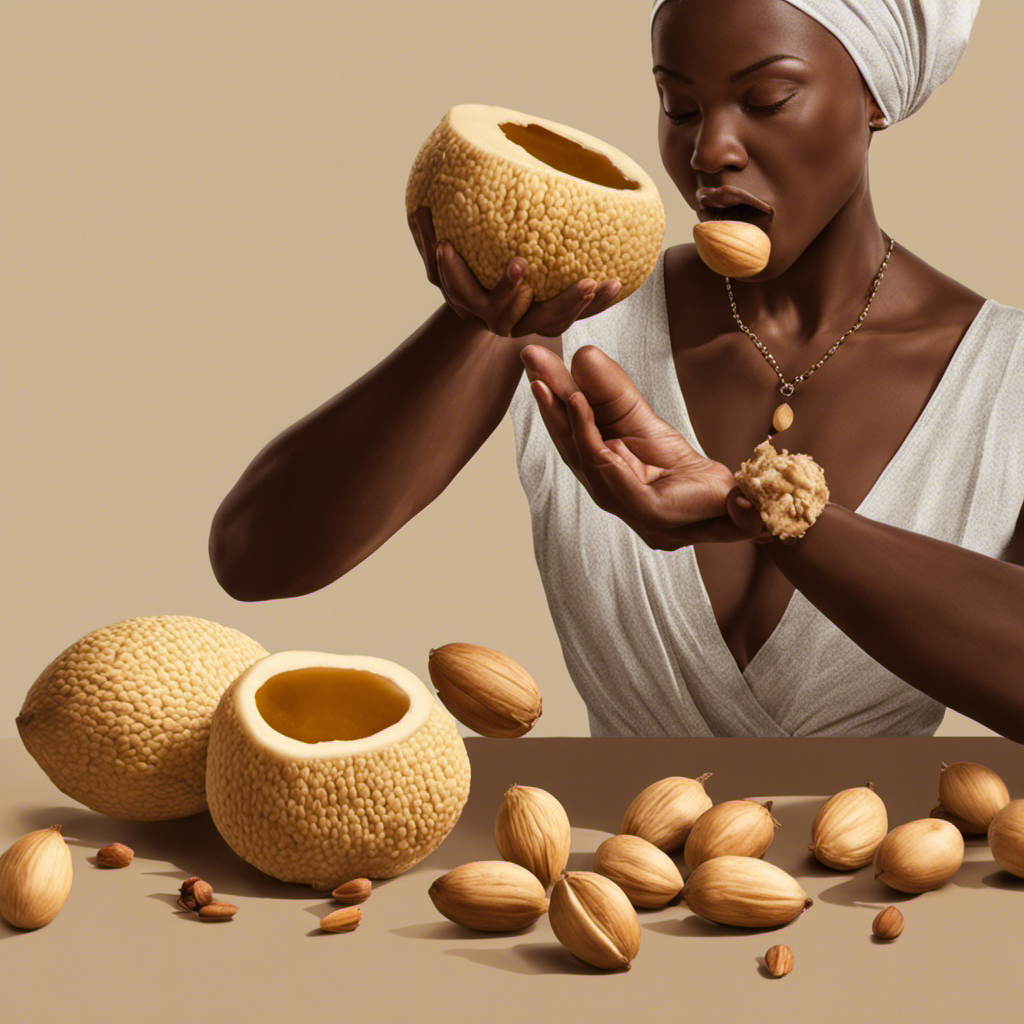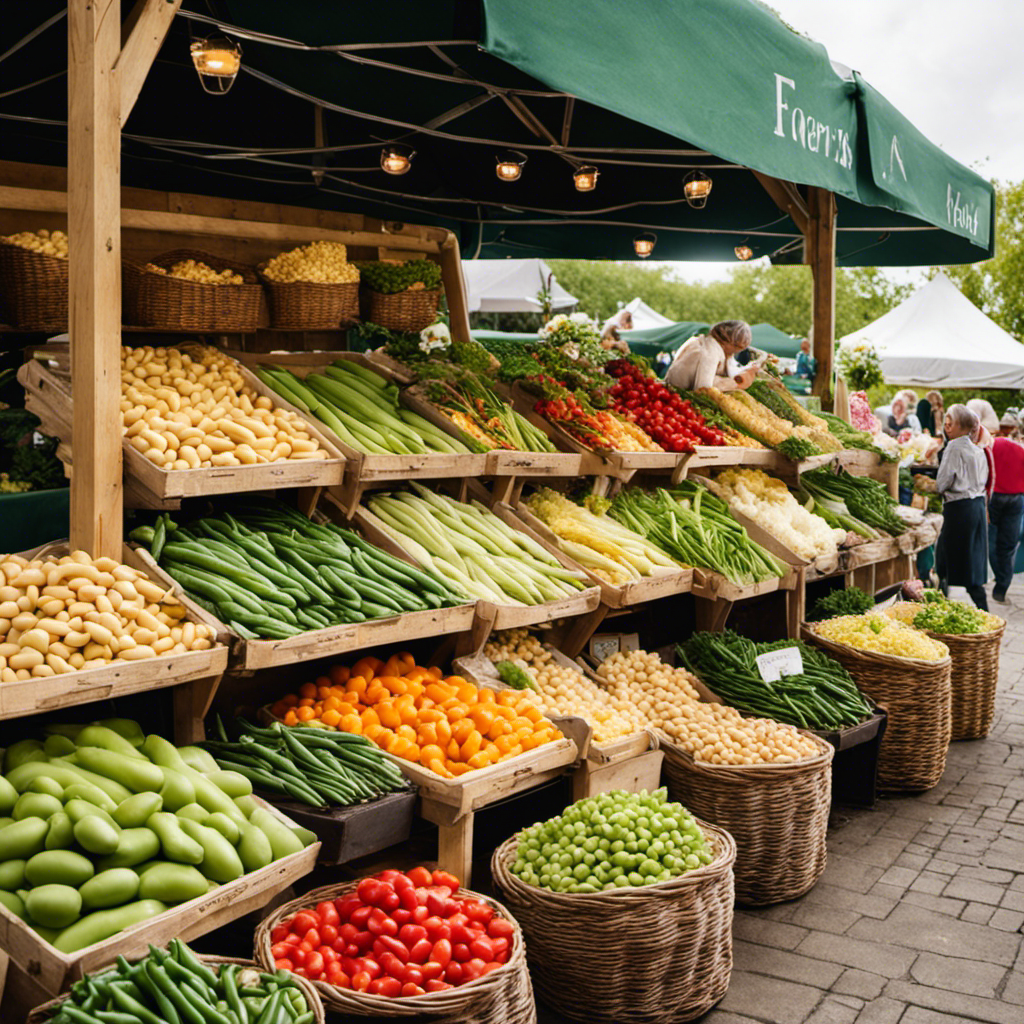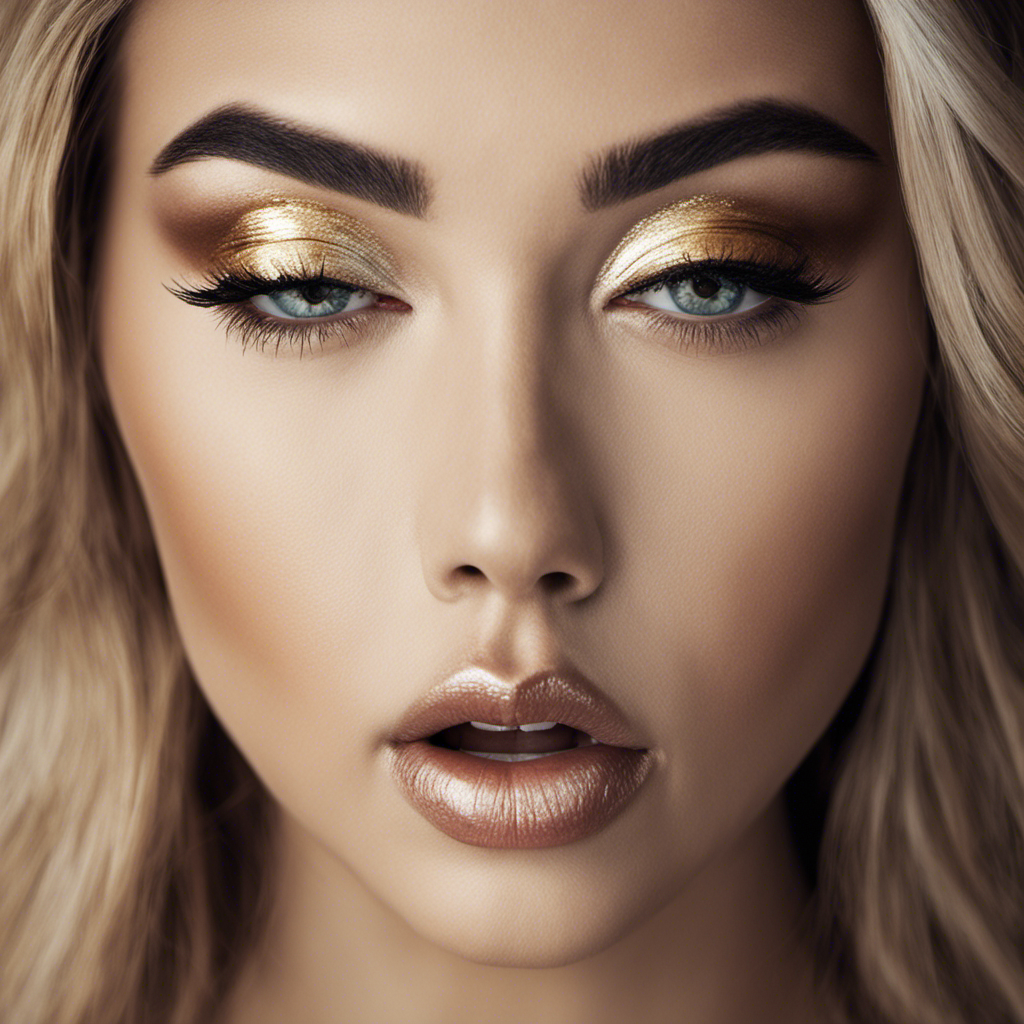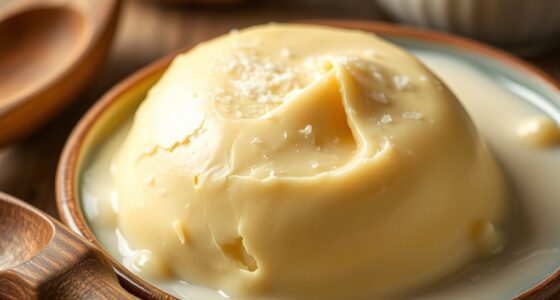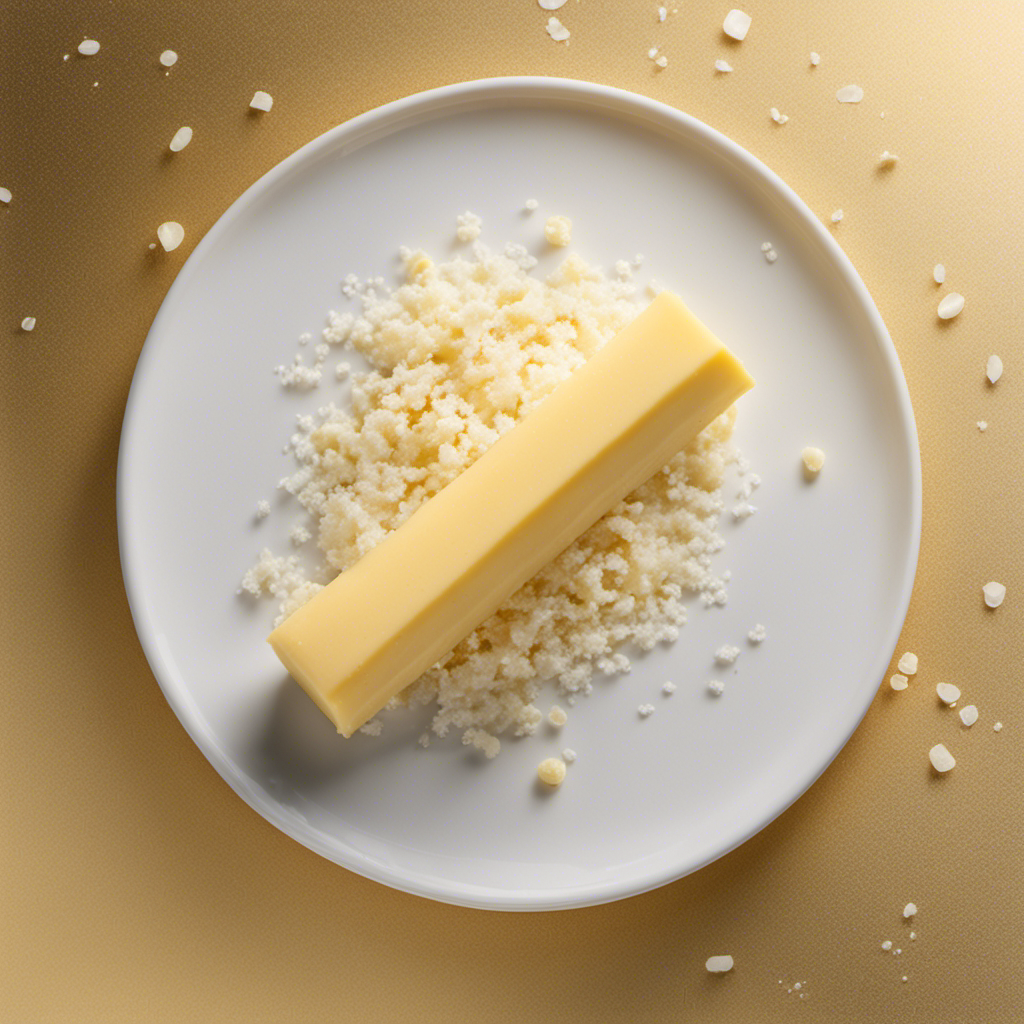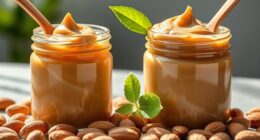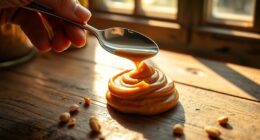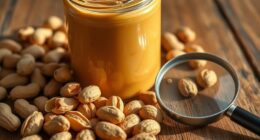Have you ever been unsure of the right way to pronounce ‘shea butter’?
Don’t worry, you’re not alone. In fact, many people struggle with the correct pronunciation of this popular skincare ingredient.
But fear not, because in this article, we will guide you through the ins and outs of pronouncing shea butter. By the end, you’ll be confidently saying ‘shee buh-tur’ and impressing your friends with your newfound knowledge.
So, let’s dive in and unravel the mystery of shea butter pronunciation together.
Key Takeaways
- Common mistakes in pronouncing Shea Butter include saying ‘shee-uh’ instead of ‘shay-uh’ and emphasizing ‘butter’ as ‘but-ter’ instead of ‘buh-ter’.
- Correct pronunciation is important in the skincare industry.
- Pronunciation guide: ‘Shea’ is pronounced as ‘shee’ and ‘Butter’ is pronounced as ‘buh-ter’.
- Regional variations in pronunciation can lead to misunderstandings or miscommunications.
Origins of Shea Butter
Shea butter comes from the nuts of the shea tree, which is primarily found in West Africa. The origins of shea butter can be traced back centuries, with its use deeply rooted in the cultural practices and traditions of the local communities.
For generations, the people of West Africa have relied on shea butter for its nourishing properties and its ability to protect and heal the skin. It has been an integral part of their daily skincare routines and is often used in traditional ceremonies and rituals. Its cultural significance goes beyond its practical uses, as it symbolizes beauty, health, and well-being.
Today, shea butter continues to be harvested and produced by local communities, supporting sustainable practices and preserving their rich cultural heritage.
Cultural Significance of Shea Butter
The cultural significance of shea butter is rooted in its traditional uses and historical importance in various African communities. Shea butter has had a profound cultural impact, serving as a staple ingredient in African skincare and haircare rituals for centuries. It is used to moisturize and protect the skin, soothe irritation, and promote hair growth. Shea butter is also deeply ingrained in traditional healing practices, believed to have medicinal properties that can treat various ailments. Its versatility and effectiveness have made it an essential part of African culture, passed down through generations. As a result, shea butter has become a symbol of African heritage and identity.
Understanding the cultural impact and traditional uses of shea butter is crucial to appreciating its significance in today’s global beauty industry.
Now that you have learned about the cultural significance and traditional uses of shea butter, let’s delve into the correct pronunciation of this cherished ingredient.
The Correct Pronunciation of Shea Butter
When it comes to pronouncing shea butter, there are some common mistakes that people often make.
One common mistake is pronouncing it as ‘shee-uh’ instead of ‘shay-uh.’
Another mistake is emphasizing the ‘butter’ part, making it sound like ‘but-ter’ instead of ‘buh-ter.’
Additionally, it’s important to note that there may be regional variations in pronunciation, with some people pronouncing it slightly differently based on their accent or dialect.
Common Pronunciation Mistakes
You might be mispronouncing shea butter if you say ‘shay-uh’ instead of ‘shee.’ It’s important to pronounce it correctly because shea butter is a popular ingredient in skincare products and knowing the correct pronunciation can help you communicate effectively with others in the industry. Here’s a pronunciation guide to help you get it right:
| Word | Pronunciation |
|---|---|
| Shea | shee |
| Butter | buh-ter |
Regional Variations in Pronunciation
To understand regional variations in pronunciation, it’s helpful to listen to native speakers and immerse yourself in the local culture. Regional variations in pronunciation can be fascinating and can vary greatly even within the same language. Here are some key points to consider when exploring regional variations:
- Different regions may have distinct accents and dialects, resulting in variations in pronunciation.
- Pronunciation can be influenced by factors such as geography, history, and cultural traditions.
- Even within a single country or region, there can be significant linguistic differences.
- Regional variations in pronunciation can sometimes lead to misunderstandings or miscommunications.
- Learning about regional variations can enhance your language skills and deepen your understanding of a culture.
Common Mispronunciations of Shea Butter
Many people mispronounce shea butter as ‘shay’ instead of ‘shee-uh.’ Shea butter is derived from the nuts of the shea tree, which is native to West Africa. It has a long history of use in African countries, where it holds cultural significance.
Known for its moisturizing and healing properties, shea butter is often used in skincare products. It is rich in vitamins A, E, and F, as well as essential fatty acids that nourish and protect the skin. In addition to its skincare benefits, shea butter is also used in haircare and has anti-inflammatory properties.
Transitioning into the subsequent section about the benefits of using shea butter, it is important to note that its pronunciation is ‘shee-uh,’ not ‘shay.’
Benefits of Using Shea Butter
Using shea butter can help improve the moisture and elasticity of your skin. It is a versatile and natural product with numerous benefits. Here are some reasons why you should incorporate shea butter into your skincare routine:
-
Deep moisturization: Shea butter is rich in fatty acids and vitamins, providing intense hydration to your skin, leaving it soft and supple.
-
Anti-aging properties: Its high concentration of antioxidants helps reduce the appearance of wrinkles and fine lines, promoting a youthful complexion.
-
Soothes irritated skin: Shea butter has anti-inflammatory properties that can calm and soothe skin conditions like eczema and psoriasis.
-
Protects against UV damage: The natural SPF in shea butter helps shield your skin from harmful UV rays.
-
Promotes hair health: Shea butter can be used as a hair mask or leave-in conditioner, moisturizing and nourishing your strands, resulting in stronger, healthier hair.
To use shea butter for hair care, simply warm a small amount between your palms and apply it to damp hair, focusing on the ends. Leave it on for a few hours or overnight before rinsing it out.
Enjoy the amazing benefits of shea butter for your skin and hair!
How to Incorporate Shea Butter Into Your Skincare Routine
If you’re looking to improve your skincare routine, incorporating shea butter can be a game-changer. Not only does shea butter provide intense moisture and nourishment to your skin, but it can also be beneficial for your hair.
When it comes to incorporating shea butter in haircare, you can create DIY recipes like shea butter hair masks or use it as a leave-in conditioner to promote healthy and shiny locks. The rich and creamy texture of shea butter makes it easy to apply and it absorbs quickly into the skin and hair without leaving a greasy residue.
Now that you know how to incorporate shea butter into your skincare routine, let’s explore where to find authentic shea butter products.
Where to Find Authentic Shea Butter Products
When it comes to finding authentic shea butter products, it’s important to look for reputable skincare brands or specialty stores that prioritize sourcing high-quality ingredients. Here are some tips on where to buy shea butter online and how to identify authentic products:
- Look for trusted online retailers like Amazon, Sephora, or Ulta that carry a wide range of skincare products.
- Check the product labels for the term ‘100% pure shea butter’ or ‘unrefined shea butter’ to ensure you’re getting the real deal.
- Research the brand’s reputation and customer reviews to ensure they have a track record of providing genuine products.
- Consider purchasing from fair-trade or ethically sourced brands that support local communities in Africa where shea butter is traditionally produced.
- If possible, visit local specialty stores or farmers markets where you can find handmade shea butter products directly from producers.
Conclusion
So there you have it! You now know how to pronounce shea butter correctly, which is a crucial step in truly appreciating this amazing skincare ingredient.
It’s funny how such a small word can have such a big impact on our lives. Just imagine, every time you say ‘shea butter,’ you’re transporting yourself to the lush landscapes of West Africa, where this miraculous product originates.
So go ahead, say it with confidence and let the magic of shea butter work its wonders on your skin.
